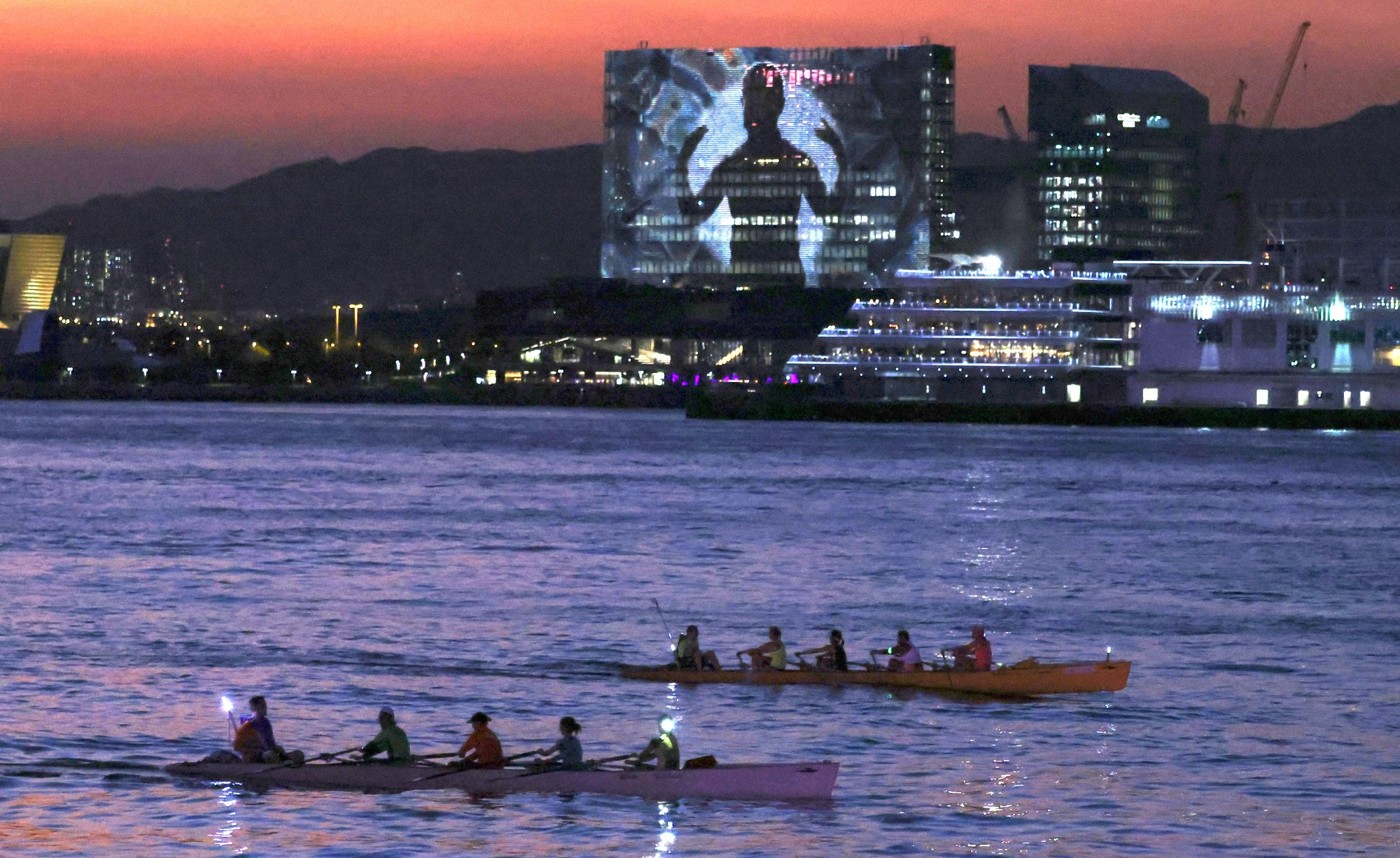
Giant LED facade of Hong Kong’s M+ museum breaks down, Indian artist Nalini Malani’s video screening suspended
- M+ Facade, which showcases video artwork and exhibition promotions daily, has remained dark for two weeks
- West Kowloon Cultural District Authority says about 10 per cent of the LED tubes cannot light up after a voltage dip earlier this month
Known as the M+ Facade, the 65-by-110-metre (213-by-360 ft) screen at the West Kowloon Cultural District has featured video artwork and exhibition promotions on a daily basis since October last year, a month before the city’s biggest art museum opened.
But the display has remained dark for the past two weeks, with the screening of In Search of Vanished Blood, the fourth video commissioned for the facade, interrupted halfway through its scheduled three-month display.

The West Kowloon Cultural District Authority said about 10 per cent of the LED tubes could not light up after a voltage dip in early September. Contractors were replacing the malfunctioning ones, and the museum hoped to resume partial functioning of the facade within weeks, it said.
Nalini Malani, the artist behind the work, told the Post this week she believed the museum would “make every endeavour” to get the screen repaired and showcase her work again.
Malani’s eight-and-a-half-minute video was scheduled to run from August 5 to October 30 as an extension of her solo exhibition, “Vision in Motion” at the museum.
The art hub spokesman said the museum would explore whether Malani’s work could be displayed again after the maintenance work was completed.
‘There will be many surprises’: M+ curator on Yayoi Kusama retrospective
The screen, one of the world’s largest media facades, is a key feature of the Swiss architect firm Herzog & de Meuron’s design for the museum.
Videos screened on the display can be seen from the West Kowloon Cultural District’s promenade, or the viewing deck of Tsim Sha Tsui’s Harbour City shopping centre. The facade could also be viewed as far as 1.5km (0.9 miles) away on the other side of the harbour.

Louis Szeto Ka-sing, an engineer with 40 years of experience, said while he had no inside information on the screen, its technical issues could have been caused by burned out light bars or signal problems in the lighting system.
Szeto said he believed the problem could be “thorny”.
“Normally it takes one to two weeks to get the burnt light bars fixed … If there is an issue with the system and components need to be repaired, it can take at least two months to fix, including time for trial and error,” Szeto said.
He added that the Covid-19 pandemic might have led to an increase in the shipping time needed for the components to be replaced.
Uncanny reminders of something else: the art of Haegue Yang, recently at M+
Szeto also said it was difficult to estimate the repair costs as the West Kowloon Cultural District Authority might have to pay extra if it involved unnatural damage or fixing expensive parts, even if the screen might still be under warranty, which normally lasted for six months to a year.
M+, the most expensive museum built in Hong Kong, previously warned that costs had exceeded its initial budget of HK$5.9 billion (US$760 million). It has yet to reveal the final cost and a number of subcontractors have told the Post that the museum has yet to settle its bills.


